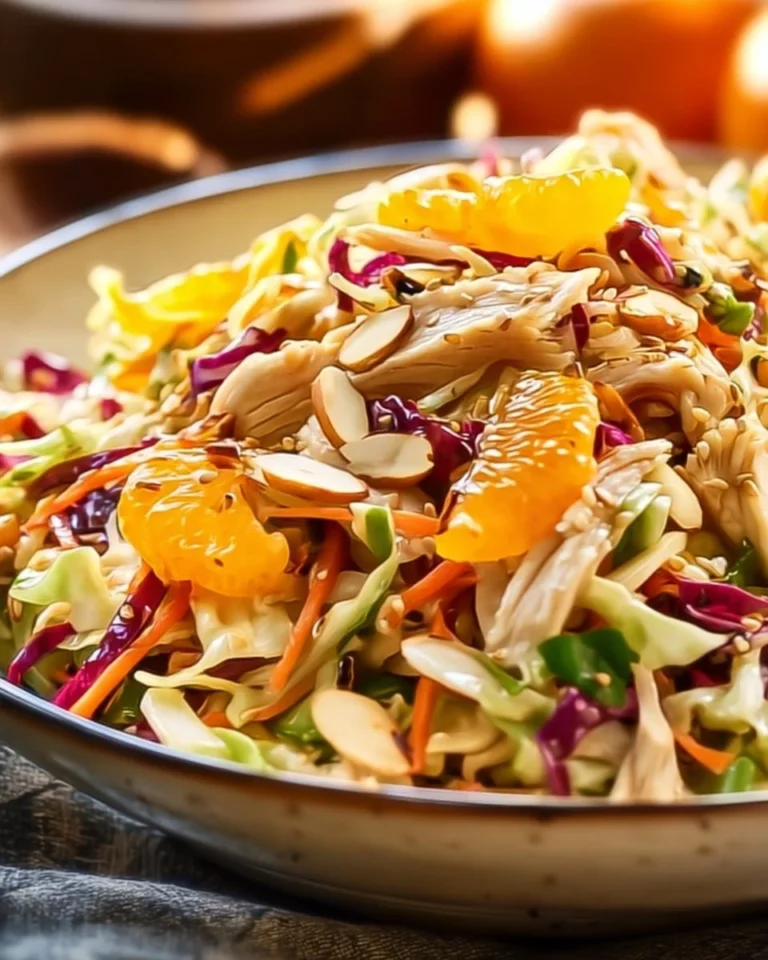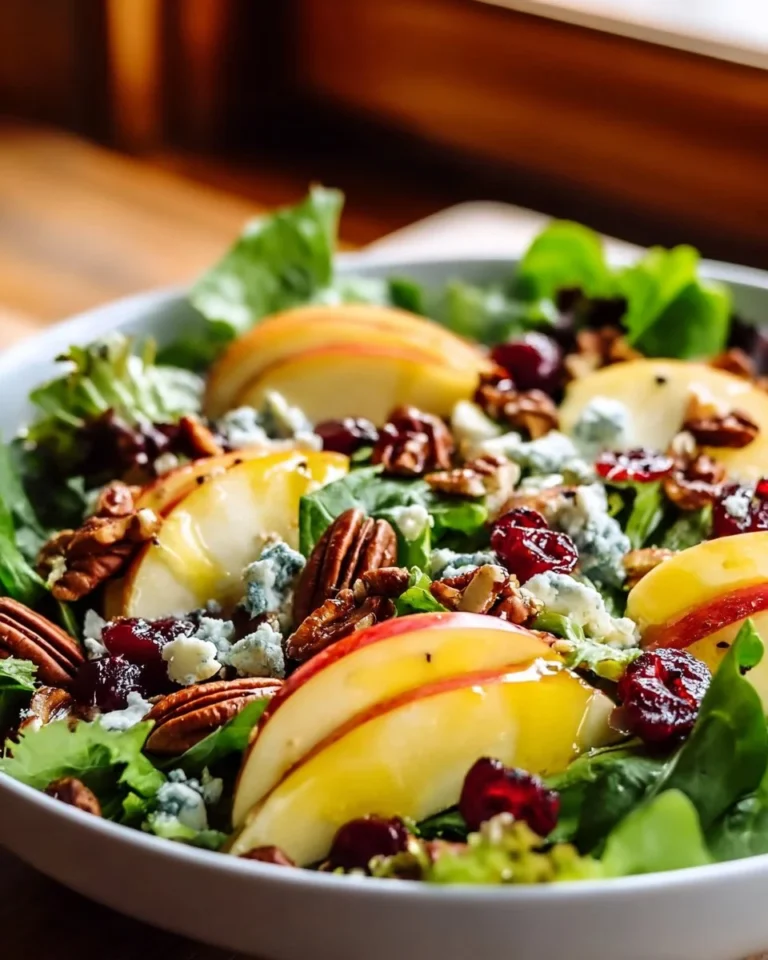Ever stared at bread aisles, wishing for a healthy option? Coconut flour bread is here to help. It’s a tasty, low-carb, gluten-free, and dairy-free choice. Plus, it’s easy to make with just seven ingredients.
Imagine enjoying a slice of warm bread that’s light and refreshing. It’s perfect for any meal. This coconut flour bread recipe is about to become a kitchen favorite!
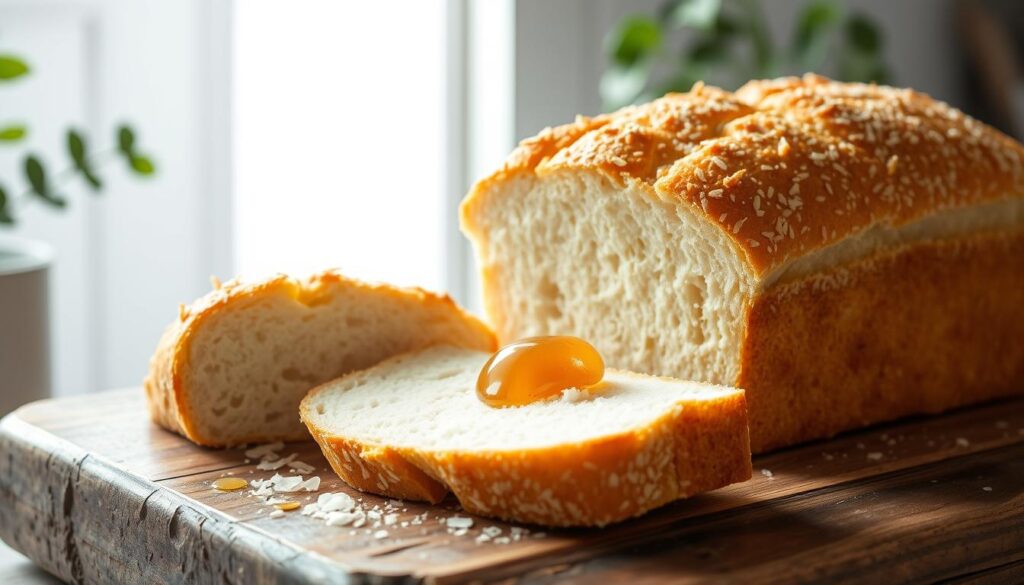
Table of Contents
Key Takeaways
- Coconut flour bread is an ideal low carb alternative for health-conscious individuals.
- This recipe is gluten-free and dairy-free, making it suitable for various dietary restrictions.
- Preparation is quick and straightforward, with only seven ingredients needed.
- Enjoy this bread as an accompaniment to meals or as a delightful snack.
- It’s versatile enough to be customized to your taste with different add-ins.
Introduction to Coconut Flour Bread
Homemade coconut flour bread is truly special. It’s a great alternative to regular bread, with coconut flour bread benefits for many diets. If you’re looking for easy bread recipes, this is perfect. It’s loved by those on keto or paleo diets for its healthiness and taste.
Imagine the smell of freshly baked coconut flour bread in your kitchen. It’s irresistible. Enjoy it toasted with your favorite spread or use it for sandwiches. This bread adds a fun twist to your meals, making it a nutritious part of your day.
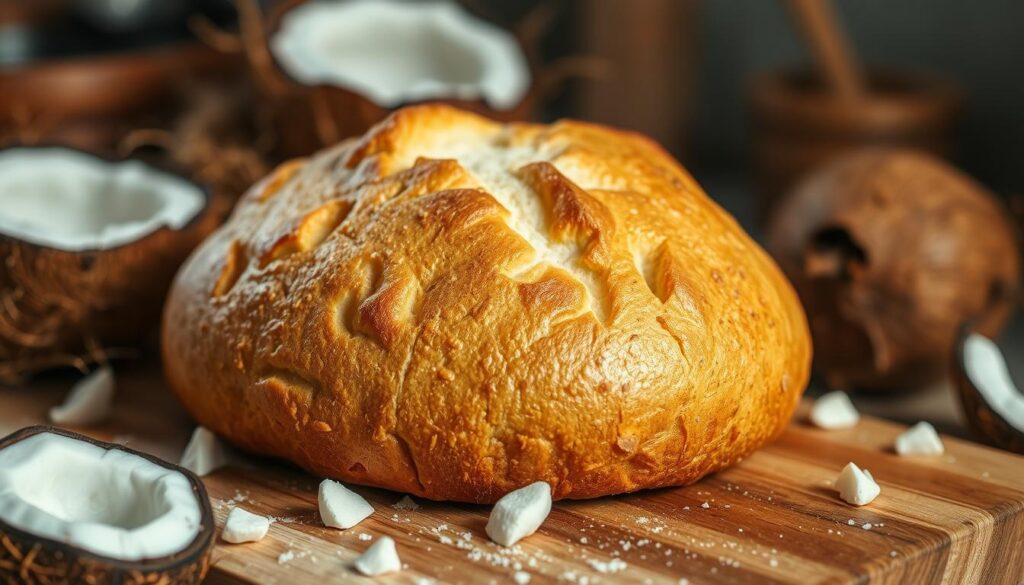
Benefits of Using Coconut Flour
Adding coconut flour to your meals can be very healthy. It’s known for being very filling, which is why many people love it.
High Fiber Content
Coconut flour is packed with fiber. This helps with digestion and keeps you feeling full. It’s great for a *low carbohydrate diet* because it helps control hunger.
By using coconut flour, you’re also helping your gut health. This is key for feeling good overall.
Low in Carbohydrates
Coconut flour is perfect for those on a *low carbohydrate diet*. It has fewer carbs than regular flour. This means you can stay energized without your blood sugar rising too high.
Many people choose coconut flour to cut down on carbs.
Gluten-Free and Dairy-Free
Coconut flour is *gluten-free*, which is great for people with gluten issues. It lets you make tasty dishes without gluten. Plus, it’s a solid base for *dairy-free alternatives*.
This makes it easy for those who can’t have dairy to enjoy baked goods.
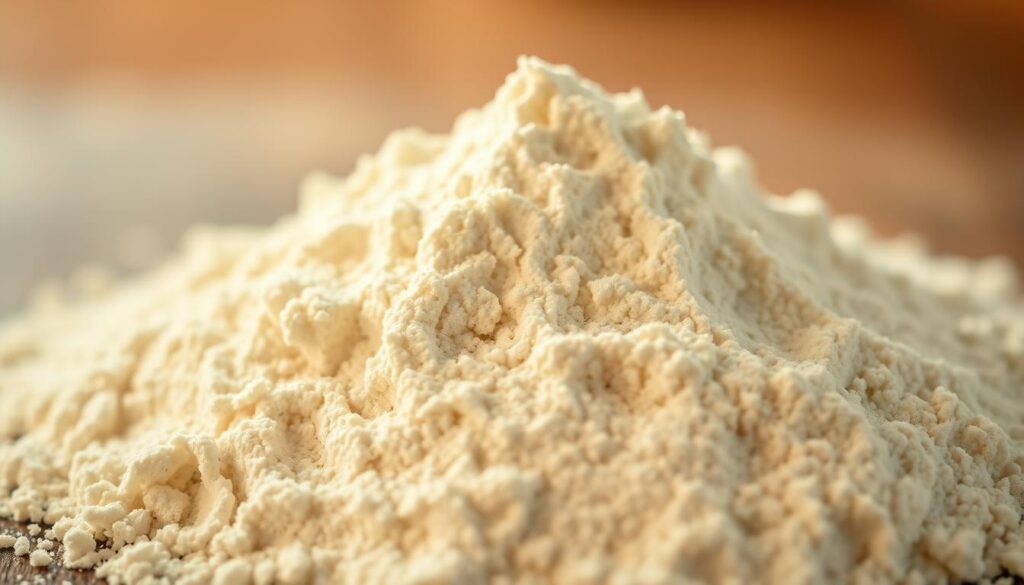
Ingredients for Low Carb Coconut Flour Bread
Making a tasty low carb coconut flour bread starts with the right ingredients. Knowing what you need helps get the best taste and texture. Let’s look at what makes a great loaf and some coconut flour substitutes for better baking.
Essential Ingredients
The key ingredients for coconut flour bread are coconut flour, eggs, baking powder, and a fat like coconut oil or olive oil. Each one is important for the bread’s taste and texture:
- Coconut Flour: This gluten-free flour is the base, providing fiber and absorbing moisture.
- Eggs: They bind everything together and help create a fluffy texture.
- Baking Powder: Choose aluminum-free varieties to avoid flavor changes.
- Fat: Coconut oil or olive oil adds moisture and richness.
Substitutions and Alternatives
Looking for coconut flour substitutes? Almond flour or ground flaxseed can work, but you might need to adjust the amounts. Olive oil is a great fat substitute for a dairy-free option. Remember, different ingredients can change the moisture level. So, keep an eye on your batter’s consistency. Try different ingredients to find your favorite.
How to Make Coconut Flour Bread
Making coconut flour bread is fun and rewarding. Follow this easy guide to make a delicious coconut flour bread. You’ll need just a few ingredients and some careful mixing.
Step-by-Step Process
Start your coconut flour bread with these essential steps:
- Preheat your oven to 350°F (175°C) and prepare an 8” x 4” metal loaf pan by greasing it lightly.
- In a mixing bowl, combine dry ingredients: coconut flour, baking powder, and salt.
- In another bowl, whisk together eggs, milk of your choice, and melted coconut oil until well integrated.
- Gently fold the wet mixture into the dry ingredients, ensuring no lumps remain.
- For lighter bread, whip the egg whites separately until stiff peaks form, then fold them into the mixture.
- Pour the batter into the prepared loaf pan and smooth the top with a spatula.
- Bake for 30 to 40 minutes or until a toothpick inserted in the center comes out clean.
- Allow the bread to cool before slicing.
Tips for Perfect Bread Baking
Keep these baking tips in mind to elevate your coconut flour bread game:
- Ensure accurate measurement of coconut flour as it absorbs more liquid compared to traditional flours.
- Utilize a quality metal loaf pan for even browning.
- Let the bread cool completely before slicing to maintain its structure.
- If the bread turns out too dense, consider incorporating more air into your mixture by mixing ingredients longer or whipping egg whites.
Understanding Coconut Flour in Baking
Baking with coconut flour can make your dishes special. It’s very absorbent, so you need more moisture and eggs in your coconut flour recipes. This is key for the right texture in your baked goods.
Coconut flour has a unique taste, with a hint of sweetness and a nutty flavor. It’s perfect for trying new tastes in your baking. Its fine texture also adds to the crumb, making your baked items better.
Coconut flour is great for those on a gluten-free or low-carb diet. It has fewer carbs, helping you stay healthy without giving up on tasty meals. If you’re new to coconut flour, try different coconut flour recipes online. They mix flavors and textures in amazing ways.
Learning about coconut flour baking can lead to delicious dishes. These dishes not only taste great but also fit dietary needs. Start using this versatile ingredient in your recipes for fun and tasty results.
For more ideas, check out this keto sourdough recipe. It shows how coconut flour can be used in creative ways in different dishes.
Variations of Coconut Flour Bread
Coconut flour bread is more than just a staple. It lets you try out many flavors. Whether you want something sweet or savory, you can make your bread special. This way, you can enjoy it with any meal or event.
Savory vs. Sweet Options
For savory bread, try adding herbs like rosemary, thyme, or garlic powder. These will make the bread great with soups and stews. If you prefer sweet, add more honey or maple syrup. You could also add dark chocolate chips or dried fruits for a mix of flavors.
Here are some ideas to try:
- For a savory twist, mix in shredded cheese and sun-dried tomatoes.
- Sprinkle spices like cumin or paprika for added depth.
- Combine coconut flour with almond flour to alter the texture and flavor.
- Add vanilla or cinnamon to create a sweet breakfast option.
- Experiment with different nuts and seeds for enhanced crunch and nutrition.
Storing and Freezing Coconut Flour Bread
Keeping your coconut flour bread fresh is key. Store it in an airtight container in the fridge for up to a week. Make sure the container is sealed well to avoid moisture damage.
For longer storage, freezing is a great choice. Wrap the loaf in plastic wrap or foil to prevent freezer burn. Freezing it sliced makes it easy to grab a slice without thawing the whole loaf.
When you’re ready to eat, just thaw the slices. You can thaw them on the counter or in the toaster. This way, your coconut flour bread stays fresh and tasty, fitting perfectly into your busy schedule.
Low Carb Coconut Flour Bread Nutritional Information
Knowing the nutritional value of low carb coconut flour bread is key for those on a low carb diet. It’s a healthier choice compared to regular bread. Here’s a detailed look at the calories and macronutrients in coconut flour bread.
Calories and Macros Breakdown
Coconut flour bread has fewer calories and carbs than regular bread. This makes it great for keeping energy up without too many carbs. Below is a table showing the main nutritional points:
| Component | Per Slice (30g) |
|---|---|
| Calories | 70 |
| Total Fat | 2.5g |
| Carbohydrates | 15g |
| Fiber | 10g |
| Protein | 3g |
The high fiber in coconut flour bread is good for your digestive health. The low carb content fits well with a low carb diet. For more on coconut flour macros and their role in your diet, check out this resource. With this info, you can add coconut flour bread to your meals and enjoy its benefits.
Comparing Coconut Flour Bread to Traditional Bread
Coconut flour bread and wheat bread differ in many ways. Coconut flour bread is denser and crumbly, giving it a unique texture. It tastes mildly sweet, which is a nice touch in many recipes.
Coconut flour is a big deal for those watching carbs. It has less carbs than wheat bread, helping with weight and blood sugar control. This is great for people with diabetes.
In a bread comparison, coconut flour bread has more fiber. This helps with digestion and keeps you full. It’s also gluten-free, making it a good choice for those with gluten issues.
To wrap it up, coconut flour bread has special benefits for health lovers. Here’s a quick comparison:
| Feature | Coconut Flour Bread | Wheat Bread |
|---|---|---|
| Carbohydrate Content | Low | Higher |
| Gluten-Free | Yes | No |
| Fiber Content | High | Moderate |
| Texture | Denser | Soft |
| Flavor Profile | Mildly Sweet | Neutral |
This comparison shows coconut flour bread as a healthy and flexible option. It fits many dietary needs and tastes.
Delicious Ways to Enjoy Coconut Flour Bread
Serving coconut flour bread opens up a world of delicious possibilities. It pairs well with various toppings and fillings. You can enjoy it in multiple ways that fit your taste preferences and dietary needs.
Toasters and Sandwiches
Toasting coconut flour bread enhances its flavor and texture. Here are some simple toast ideas for a delightful breakfast or snack:
- Spread almond butter and top with banana slices for a nutritious start.
- Layer cream cheese and smoked salmon for a satisfying savory option.
- Top with avocado and a pinch of salt for a burst of freshness.
Coconut flour bread is also fantastic for sandwiches. Here are some enticing sandwich options:
- Turkey and spinach with a dollop of hummus make for a nutritious lunch.
- Grilled vegetables and goat cheese create a flavorful vegetarian delight.
- Ham and swiss with a touch of mustard offers a classic twist.
Serving Suggestions
Beyond simple toasting and sandwich spreads, consider these serving suggestions to elevate your meals:
- Transform coconut flour bread into mini canapés by topping small pieces with assorted spreads and garnishes.
- Use it to make French toast by dipping slices in a whisked mixture of eggs and your favorite milk substitute, then frying until golden.
- Pair it with soups or salads for a wholesome accompaniment.
Other Low Carb Bread Recipes to Try
If you’re searching for more low carb bread recipes for a keto diet, you’re in the right place. There are many alternative bread options beyond coconut flour. They offer tasty flavors and textures.
Almond flour bread is a favorite among low-carb fans. It’s light but filling, great for sandwiches or with butter. You might try adding chia seeds or flaxseed meal for extra nutrition.
Olive and rosemary bread is another great choice. It adds a unique aroma to your meals while staying within your diet. You can experiment with many flavors to find your favorite.
Trying these recipes will not only curb your carb cravings but also make your meals exciting. You can mix and match flavors to create bread that fits your lifestyle and keeps your diet interesting.
| Recipe | Main Ingredients | Carb Count (per slice) |
|---|---|---|
| Almond Flour Bread | Almond flour, eggs, baking powder | 2g |
| Flaxseed Meal Bread | Flaxseeds, eggs, coconut oil | 1g |
| Olive and Rosemary Bread | Almond flour, olives, rosemary | 3g |
Exploring these low carb bread recipes will boost your cooking skills and help you stay on track with your health goals. Enjoy the process of discovering new flavors!
Common Mistakes When Making Coconut Flour Bread
Starting to make coconut flour bread can lead to bread making mistakes. Knowing these mistakes can make your baking better and ensure a great loaf every time.
One big problem is not measuring coconut flour right. It absorbs a lot of liquid, and too much can make the bread dry and crumbly. Always measure carefully, or use a scale for exactness.
Another issue is not using enough binding agents. Coconut flour lacks gluten, so it needs eggs or other binders to hold together. Using too few eggs can make the bread dense. Use at least one large egg for every quarter cup of coconut flour.
Some people forget to let the batter rest. This step is important for the coconut flour to soak up liquid and improve the dough’s texture. Skipping this can cause the bread to be gummy or have an uneven crumb.
Lastly, watch the baking time closely. Coconut flour bread can brown faster than regular bread. Start checking if it’s done a few minutes before the timer goes off. Baking it too long can dry it out, leading to another coconut flour challenge.
Conclusion
Coconut flour bread is a tasty, healthy choice for many diets. It’s packed with fiber and has fewer carbs. This makes it a great option for those looking for nutritious meals.
When you make coconut flour bread, you can try different flavors. You might like savory herbs or sweet treats. Adding coconut flour to your baking means you’re choosing a healthier way to eat.
Now, it’s time to start baking your own coconut flour bread. It’s fun and good for you. Enjoy the process and the delicious results!
FAQ
What is coconut flour bread?
Coconut flour bread is a special bread that’s gluten-free and dairy-free. It’s made mostly from coconut flour. It’s low in carbs and has a unique taste. This makes it great for meals, like those on keto or paleo diets.
How do I make coconut flour bread?
Making coconut flour bread is easy. You need coconut flour, eggs, baking powder, and a few more things. Just mix the wet and dry ingredients together. Then, bake it in a hot oven until it’s golden.
Can I substitute ingredients in the coconut flour bread recipe?
Yes, you can change things up. Use olive oil instead of coconut oil for a dairy-free option. Also, pick aluminum-free baking powder to keep the taste right.
Why is coconut flour more absorbent than other flours?
Coconut flour soaks up a lot of moisture. This means you need more eggs and liquid in recipes. It helps make the bread the right texture.
What are some creative variations I can try with coconut flour bread?
Try adding herbs or spices for a savory twist. Or add more sweeteners for something sweeter. You can also add cheese or nuts for extra flavor and texture.
How should I store coconut flour bread?
Wrap the bread in plastic wrap and freeze it for longer storage. Or keep it in an airtight container in the fridge for up to a week. This keeps it fresh.
What are the nutritional benefits of coconut flour bread?
Coconut flour bread is full of fiber and low in carbs. It’s also gluten-free. This makes it a healthy choice for those on low-carb diets.
How does coconut flour bread compare to traditional wheat bread?
Coconut flour bread is denser and tastes different from wheat bread. It’s a better choice for those avoiding gluten and wanting to eat less carbs.
What are some common mistakes when making coconut flour bread?
Mistakes include not measuring coconut flour right and not using enough eggs. This can make the bread too dense. Stick to the recipe to avoid these mistakes.
Are there any other low carb bread recipes similar to coconut flour bread?
Yes! Look into almond flour bread and other quick bread recipes. They’re all gluten-free and offer different flavors and textures for your meals.
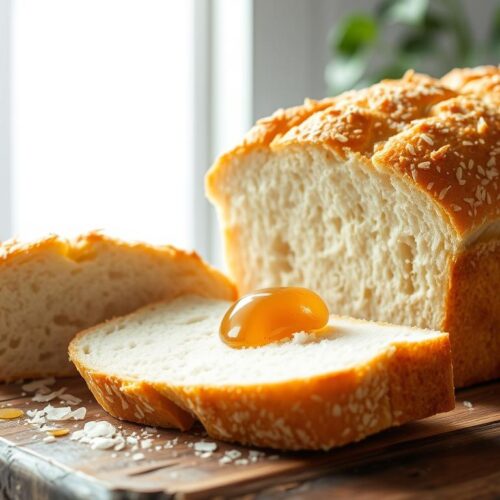
Low Carb Coconut Flour Bread (Gluten-Free, Dairy-Free)
Ingredients
- ½ cup coconut flour
- 6 large eggs
- ¼ cup coconut oil melted
- ½ cup unsweetened almond milk
- 1 tablespoon apple cider vinegar
- 1 teaspoon baking soda
- ½ teaspoon salt
- Optional: 1 tablespoon ground flaxseed or chia seeds for added fiber
Instructions
- Preheat oven to 350°F (175°C). Line a 9×5-inch loaf pan with parchment paper or grease well.
- In a large mixing bowl, whisk together eggs, coconut oil, almond milk, and apple cider vinegar until smooth.
- In a separate bowl, mix coconut flour, baking soda, and salt.
- Slowly stir the dry ingredients into the wet ingredients until fully combined. Let the batter sit for 2–3 minutes to thicken.
- Pour the batter into the prepared loaf pan and spread evenly.
- Bake for 35–40 minutes, or until a toothpick inserted in the center comes out clean.
- Let cool in the pan for 10 minutes, then transfer to a wire rack to cool completely before slicing.
